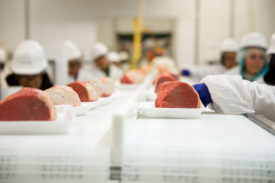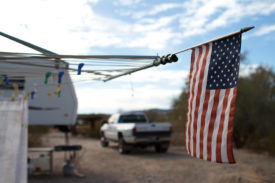Anna:
Summer is here, which means some of us are lucky enough to take some days off work. I hate to be a party-pooper, but take a look at how paid vacation days in the United States stack up against other countries. (h/t Anne Martens).
We’re hooked on meat and it looks like the rest of the world is following in America’s carnivorous footsteps. Mark Bittman asks if we’re paying the price (in terms of our own health and our planet’s) to the now-obsolete primal urge that screams, “Listen, dummy, if you can find meat you’d better eat it, because who knows when you’ll eat it again!”
Finally, even Barbie is going green. Mother Jones reports that as part of toymaker Mattel’s new “career empowerment-minded collection” of Barbie dolls, “the pink corvette-driving blonde bombshell has been reimagined as Architect Barbie, complete with “symmetrically stylish outfit” and “essential on-the-job accessories” like a hard hat and pink document tube.” Obviously, Architect Barbie needs to move out of the pink plastic “McMansion” she used to live in when I was a kid. To that end, Mattel has teamed up with the American Institute of Architects (AIA) to launch the Architect Barbie Dream House Design Competition to design her some new “eco-conscious” digs. (It’s obvious that Mattel is trying to woo skeptical moms just like me. Nice try! But for the record, I’m still debating whether or not to expose my daughter to Barbie dolls, and I’m still naïve enough to think it’s a decision I actually get to make in the first place).
Alan:
Philip Howard’s The Death of Common Sense, first published in 1994, has been re-released with updates, and I’ve been zipping through it this week. The thesis is that several American impulses in government have made US government deeply dysfunctional. Most important has been our desire to eliminate government leaders’ judgment, to avoid corruption, bias, and favoritism, through the elaboration of colossal regulatory codes and the proliferation of public involvement processes. The book bristles with head-slapping examples of well-intended but ultimately ruinous public policies. Such critiques are common from small-government conservatives, but it’s good to read a reasoned critique from a believer in government as a potential tool for advancing our shared aspirations. Lesson: How we write the rules matters even more than our intentions for those rules.
Clark:
Read Joseph Stiglitz on economic inequality.
Point-counterpoint on the Sound Transit rail line in greater Seattle. I know some of our readers won’t like it, but I’ve gotta side with John Niles on this one: the ridership on Seattle’s light rail continues to disappoint. (I’ve gotta be evenhanded here — I’ve been picking on road traffic forecasting for a while now, but the track record on forecasting rail ridership isn’t very good either. That said, this piece argues that transit ridership forecasting has improved in recent years — though forecasts of transit system costs have not.)
Eric dP:
If you like feeling panicked – and I know you do – you should read Newsweek’s piece on extreme weather brought about by climate change: “Are You Ready For More?”
After that, read Jonathan Franzen’s wonderful piece in the New York Times, “Liking Is For Cowards. Go For What Hurts.” I won’t quote from it, but I will say that I actually choked up toward the end (and that doesn’t happen to me very often.)
In happier avian news, check out Seattle’s Dept of Transportation blog for a look at the city’s nesting peregrine falcons. Cute! And check out King5.com to see Washington Fish & Wildlife’s bald eagle cam nestled high in a Douglas fir over Lake Washington. And then, if you really need a serious fix of wildlife cams, check out British Columbia’s Hancock Wildlife Foundation, which seems to have placed a camera on every wild animal in the province.







